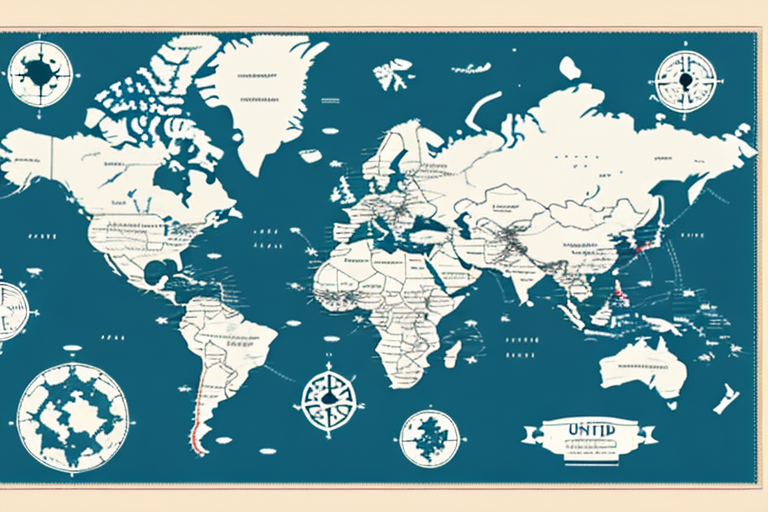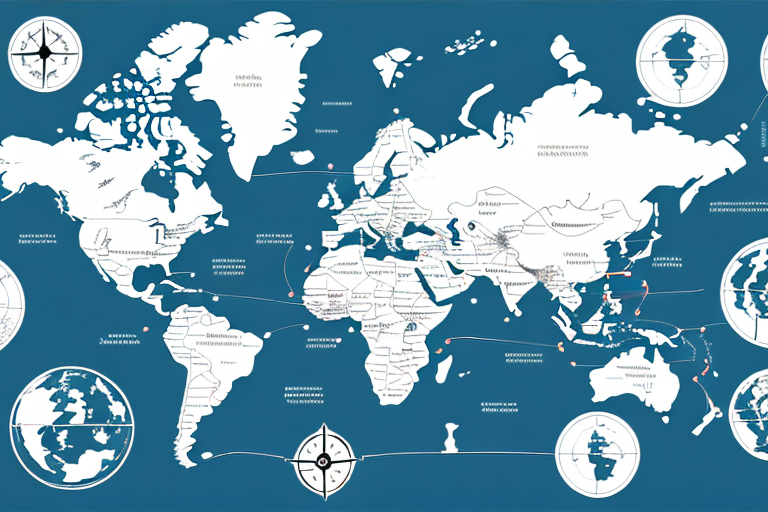Importance of the UPS Zone Map for Efficient Shipping
As a business owner, ensuring your products reach their destination promptly and cost-effectively is crucial. One pivotal tool in achieving this is the UPS Zone Map. Understanding this map is essential as it directly influences both the cost and delivery time of your shipments.
The UPS Zone Map categorizes the United States and Canada into nine distinct zones, ranging from Zone 1 (closest) to Zone 9 (farthest). The distance between your package's origin and destination determines its zone, subsequently affecting shipping rates and delivery durations.
By mastering the UPS Zone Map, businesses can better plan their logistics, optimize shipping strategies, and enhance customer satisfaction through reliable delivery estimates.
Understanding the UPS Zone Map: A Comprehensive Guide
How the UPS Zone Map Works
To determine the zone for a package, identify the origin location on the UPS Zone Map. The map assigns a zone number to each state or region based on its distance from the origin. For example, shipping from New York to California might place the package in Zone 8 or 9, depending on the specific locations.
The Zone Map is primarily applicable to UPS Ground Shipping. Other services like UPS Express or UPS Worldwide have different pricing structures and delivery expectations.
Updates and Changes to the Zone Map
UPS periodically updates its Zone Map to reflect changes in its shipping network and to optimize delivery routes. Staying informed about these updates ensures that your shipping plans remain accurate and cost-effective.
For the latest information, refer to the official UPS Shipping Support.
Optimizing Your Shipping Strategy with the UPS Zone Map
Estimating Shipping Costs and Delivery Times
Understanding the zone of both your shipment's origin and destination allows you to estimate shipping costs and delivery times accurately. Ground shipping is generally more economical than express options, but it requires a longer transit period.
For instance, shipping within the same zone typically costs less and is faster compared to inter-zone shipments. Utilizing tools like the UPS Shipping Cost Calculator can aid in precise cost estimation.
Consolidating Shipments
If you frequently ship to the same regions, consider consolidating your shipments within specific zones. This approach can lead to significant savings by reducing the number of individual shipments and taking advantage of bulk shipping rates.
Calculating Shipping Costs Using the UPS Zone Map
Steps to Determine Shipping Costs
- Identify the origin and destination zones using the UPS Zone Map.
- Use the UPS Shipping Cost Calculator to input package details such as weight and dimensions.
- Select the appropriate shipping service based on your budget and delivery time requirements.
Remember, additional factors like package dimensions, shipping speed, and optional services (e.g., insurance, signature confirmation) can influence the final shipping cost.
Leveraging UPS Discounts
Businesses that regularly ship with UPS can benefit from programs like UPS My Choice for Business, which offers discounted rates and other perks such as free package pickup and delivery alerts. Exploring such programs can lead to further cost reductions.
The Benefits of Leveraging the UPS Zone Map for Your Business
Accurate Cost Management
By accurately estimating shipping costs using the UPS Zone Map, businesses can better manage their budgets and avoid unexpected expenses. This precision aids in pricing products competitively while maintaining profitability.
Enhanced Customer Satisfaction
Providing customers with reliable delivery estimates based on zone information fosters trust and satisfaction. Transparent communication about shipping times can lead to repeat business and positive reviews.
Strategic Location Planning
Understanding which zones your business frequently ships to can inform decisions about warehouse locations. Positioning your warehouses closer to high-demand zones can reduce shipping times and costs.
Navigating the UPS Zone Map: Tips and Best Practices
Regularly Review the Zone Map
Since UPS updates its Zone Map periodically, it's essential to review the latest version regularly. This ensures that your shipping calculations remain accurate and that you can adjust your strategies accordingly.
Utilize UPS Tools and Resources
Take advantage of the various tools UPS offers, such as the UPS Tracking Tool and the UPS Shipping Tools, to streamline your shipping processes.
Train Your Team
Ensure that your logistics team is well-versed in using the UPS Zone Map and related tools. Proper training can lead to more efficient shipping operations and cost savings.
Conclusion: Enhancing Your Shipping Strategy with the UPS Zone Map
Mastering the UPS Zone Map is a fundamental aspect of an effective shipping strategy. By understanding how zones influence shipping costs and delivery times, businesses can make informed decisions that enhance efficiency and profitability.
Incorporating the UPS Zone Map into your logistics planning allows for accurate cost estimations, optimized shipping routes, and improved customer satisfaction. Whether you are a small business or a large corporation, leveraging this tool can provide a competitive edge in the marketplace.
For more information and to access the latest UPS Zone Map, visit the official UPS Shipping Support page.








